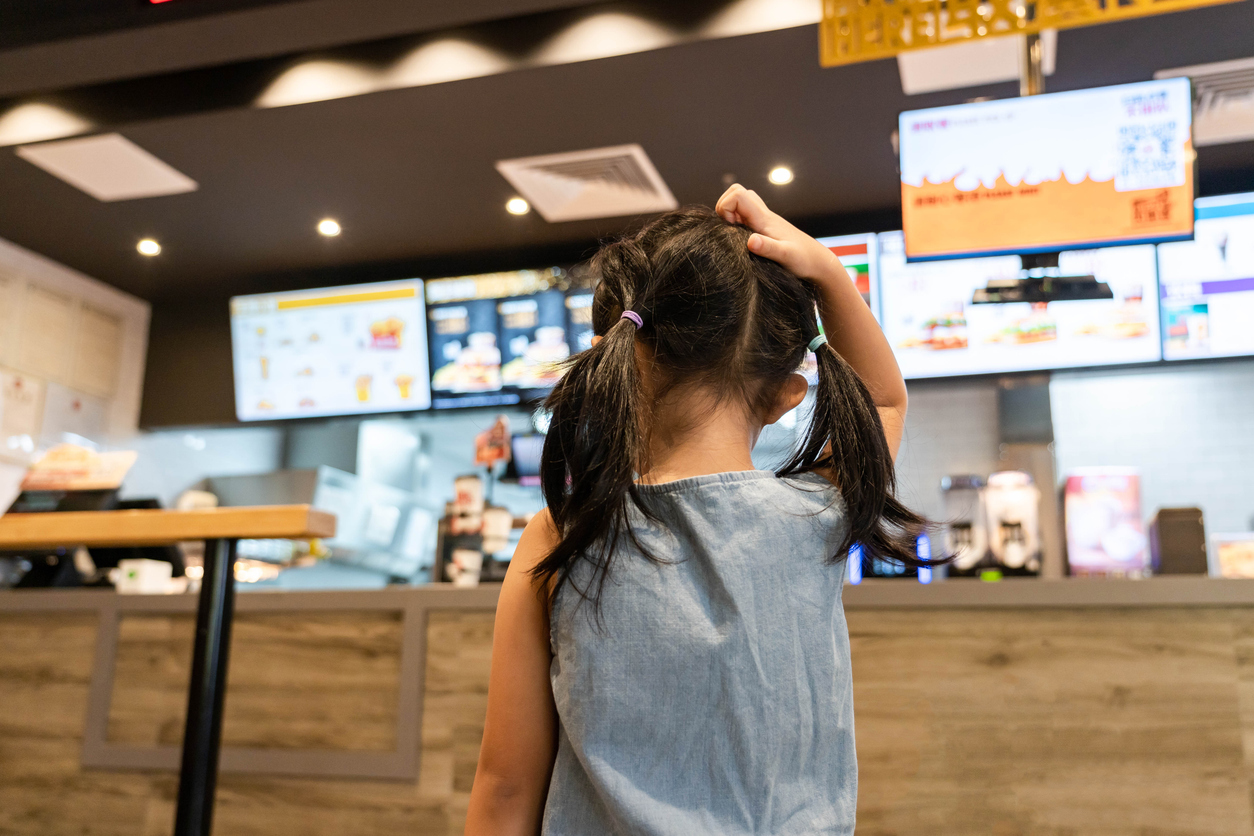Artificial Intelligence is changing the fast food industry in exciting ways. From smart ordering systems to personalized menus, AI helps chains serve customers better and faster. It analyzes data to predict what people want, making the dining experience smoother. This technology not only boosts sales but also keeps customers happy and coming back for more.
AI is also streamlining operations behind the scenes. It helps manage inventory, reducing waste and ensuring fresh ingredients. With AI, fast food chains can optimize staffing, making sure they have the right number of employees during busy hours. This efficiency leads to quicker service and happier customers.
As AI continues to evolve, it promises to reshape how we think about fast food, making it more efficient and enjoyable for everyone involved.
AI-Powered Ordering And Customer Experience
The ordering process has been made very smooth and personalized with AI. Now, the customer enjoys fast service, correct orders, and recommendations that are tailored to his or her needs. It learns from every interaction, which continues to improve its understanding of the behavior and preferences of the customer.
Automated Kiosks And Self-Service Technology
Kiosks and Self-Service technology are surging in fast food outlets. These cutting-edge AI technologies, process high-order complexity with immaculate precision, reduce wait time and minimize labor.
For instance, McDonald's has integrated AI into its operations by deploying automated order-taking systems in drive-thrus. This technology allows customers to place orders without human interaction, speeding up the process and enhancing customer satisfaction. Additionally, AI-driven kiosks help personalize the ordering experience by suggesting items based on previous orders.
Voice Recognition And AI Chatbots
Voice Recognition and AI Chatbots are changing the game of how customers interact with fast food chains. These systems can realize natural language, complex orders, and the ability to answer customer queries effectively. For instance, Taco Bell is using AI in its drive-thru operations to improve order accuracy and speed. The AI system analyzes customer preferences and past orders to provide tailored recommendations, making the ordering process more efficient and enjoyable.
Personalized Recommendations Using AI
AI analyzes customer data to provide the most personalized menu suggestions and promotions. This smart technology will use past orders, time of day, and even the weather to suggest items that customers are likely to enjoy. A recent example of Taco Bell using this AI recommendation system has increased average order value by 35% with targeted upselling and personalized combo suggestions.
AI In Kitchen Automation And Food Preparation
It is in the kitchen where AI comes to life in fast food operations. From cooking and food assembly to quality control and inventory management, AI is making kitchens smarter and more efficient. Explores the various ways AI is impacting kitchen automation and food preparation.
Robotics in Cooking and Food Assembly
Robotics is at the forefront of kitchen automation. Robots are increasingly being used to perform repetitive tasks that were once done by human hands. This shift not only speeds up food preparation but also ensures consistency in quality.
For instance, Chipotle has introduced Chippy, a robot that makes tortilla chips. This automation increases efficiency as well as minimizes food waste. Chippy can produce consistent quality, ensuring that every batch of chips meets customer expectations.
AI-Powered Quality Control And Food Safety
AI monitors the following in real-time for any food temperature, time to cook, and safety measures. This means the prospective issues are detected in advance and, thereby, high food quality standards are upheld.
According to the Centers for Disease Control and Prevention (CDC), approximately 48 million people in the U.S. get sick from foodborne illnesses each year. By implementing AI-powered quality control measures, fast food chains can significantly reduce these numbers and enhance customer trust.
Predictive Inventory Management
Managing inventory is a critical aspect of running a successful fast-food restaurant. AI food inventory management provides predictive analytics that helps restaurants maintain optimal stock levels. AI can analyze sales data to predict demand for specific items. This helps restaurants order the right amount of ingredients, reducing food waste and saving money.
AI For Delivery And Drive-Thru Optimization
Fast food chains are now adopting AI to change the way people get to consume their products. From the delivery services to drive-thru systems, such systems can reduce waits while ascertaining that all orders are correct and efficiently delivered.
AI-Augmented Accuracy Of Order And Expediency
Voice Ordering systems powered by AI have changed the operations of drive-thrus. Now, multiple orders can be managed at one given time with a zero percent error rate. It has brought the wait time down to an average of 25 percent for Wendy's AI drive-thru system, while the orders are placed with a 98 percent accuracy now.
Smart Route Optimization For Delivery
AI algorithms analyze traffic patterns, weather conditions, and delivery distances to determine the most efficient delivery routes. Pizza Hut's AI routing system has reduced delivery times by 20% while increasing driver efficiency by 30%.
AI In Autonomous Food Delivery
Food delivery is entering a new era with autonomous vehicles and drones. Companies like Uber Eats and DoorDash utilize AI for optimizing delivery routes, while autonomous robots navigate urban environments to deliver food directly to customers' doorsteps. Faster delivery times lead to happier customers, which can increase repeat business.
AI In Sustainability And Waste Reduction For Fast Food Chains
AI makes fast food chains more environmentally responsive by reducing waste and increasing the efficiency of energy use. This system optimizes resource use, yet it offers high service quality.
Application Of AI To Reduce Food Wastes
AI is being applied in fast food chains to significantly reduce food waste through:
- Predictive analytics
- Inventory optimization
- Portion control
By accurately forecasting demand and managing supplies, these technologies help minimize excess food production and enhance overall operational efficiency.
Energy Efficiency In Fast Food Chains
AI-driven systems optimize energy usage within the restaurant business. Starbucks's intelligent energy management system has already decreased energy use by 25% through the smart control of heating, cooling, and using equipment.
Challenges And Ethical Considerations Of AI In Fast Food
Although AI comes with many advantages, it poses many challenges the industry needs to take into its stride thoughtfully and proactively.
Effect On Employment And Workforce
The biggest and most realistic concern is job losses because of the introduction of AI technology. However, the new chains have recreated and rehabilitated their workers for new roles involving customer services and maintenance of AI systems.
Data Privacy And Security Concerns
As AI systems collect more customer data, privacy protection becomes increasingly important. Fast food chains must balance personalization with data security. KFC's enhanced data protection protocols have helped maintain customer trust while still providing personalized services.
Cost And Implementation Challenges
It is expensive for small chains but usually pays itself off in the long run. Wendy's explains that its expenses for AI have been recovered through efficiency and an increase in sales since it began 18 months ago.
The Future Of AI In Fast Food Chains
The future of quick service seems to be more toward automation and individualized service. Complete, independent restaurants, efficient predictive analytics, and even highly advanced customer interaction systems are going to appear on the horizon. Companies are already exploring ghost kitchens, a new concept of a kitchen entirely operating on AI systems.
Future innovations include:
- Fast food chains like McDonald's have experimented with AI-driven systems for taking orders at drive-thrus. However, trials have shown mixed results, with issues such as miscommunication and incorrect orders leading to customer dissatisfaction.
- The rising minimum wage in California has prompted many fast-food operators to accelerate their adoption of AI technologies. This shift aims to reduce labor costs by automating tasks traditionally performed by human workers.
Many fast food companies are exploring generative AI for various applications, including digital chatbots for customer service and image recognition for monitoring wait times. This technology is expected to enhance operational efficiency and customer engagement.
Make Your Restaurant Service Fast And Easy Now!
With Checkmate, you can transform your operations with AI phone ordering, AI drive-thru, and automated kiosks. These tools will speed up service and enhance the overall dining experience. Imagine your customers enjoying a seamless ordering process, whether they’re on the phone, at the drive-thru, or using a kiosk. By embracing these innovative solutions, you can boost efficiency, reduce wait times, and keep your customers coming back for more. Don’t wait any longer—get a demo to make your fast-food service fast today!





